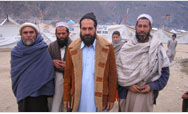You are here » Home » Telling Our Story
Photo & Caption
Replanting Mangrove Forests

| |
Photo: AIT/Amrit Bart
|
|
Through a cash-for-work project, villagers in Ranong province learn to harvest and plant mangrove seedlings, restoring a delicate coastal habitat and a precious natural resource.
|
When the December 2004 tsunami hit Thailand, villages with mangrove forests along the coast were spared the full power of the disaster — the mangrove trees absorbed the much of the tsunami’s force. But the mangroves did not escape unharmed — the tsunami deposited silt that clogged the pores of the trees’ aerial roots, suffocating mangrove forests and jeopardizing their delicate ecosystem. Coastal villages in Suk Samran district, in southern Thailand’s Ranong province, are deeply dependent on the nearby mangrove forests for a range of resources, including fuel and building materials.
Local conservation groups began replanting mangrove trees in Suk Samran, but they could only supply five percent of the seedlings coastal areas need to regenerate the forests. USAID stepped in to help conservation groups and coastal communities replant their forests, training 25 villagers in sustainable forest use, identification of mangrove species, proper collection of seedlings, and cultivation techniques. Through a USAID cash-for-work initiative, 100 villagers helped plant and care for 40,000 mangrove seedlings.
The program is also helping create culturally and environmentally sound development practices that boost economic recovery while protecting mangrove forests. In the two decades preceding the tsunami, 950 of Thailand’s 1,500 square miles of coastal mangrove forests were cleared to make way for shrimp farms. Now, coastal communities have a chance to reverse that trend. With help from USAID, villagers in Suk Samran are learning to manage their natural resources better and increase their protection from coastal hazards.
Print-friendly version of this page (548kb - PDF)
Click here for high-res photo
Back to Top ^ | 

